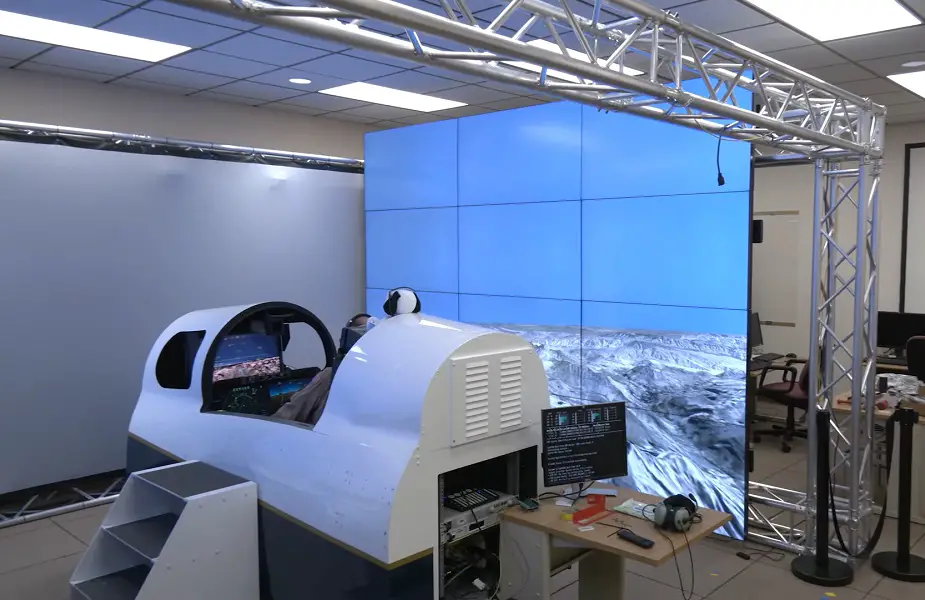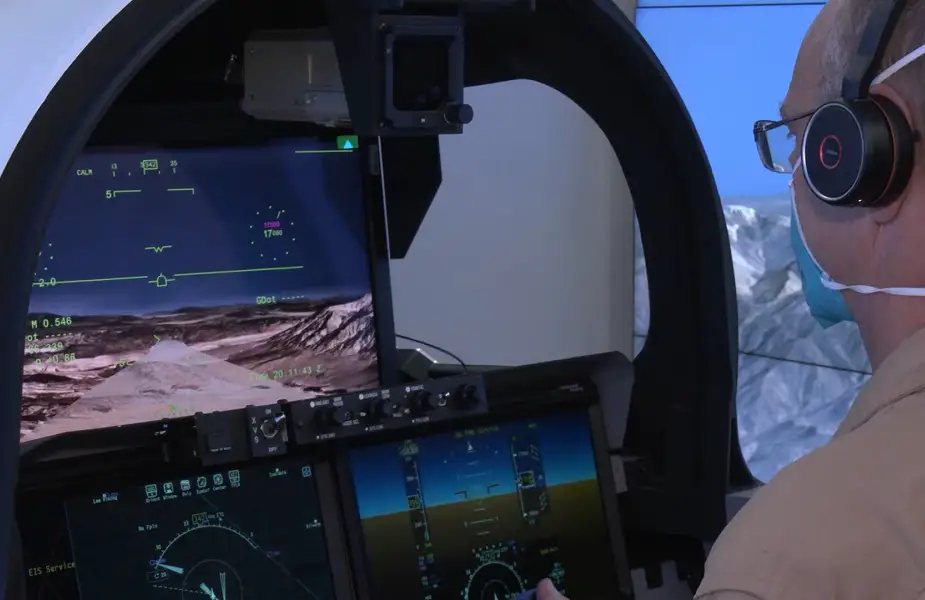Breaking news
NASA simulator for X-59 Quiet SuperSonic Technology aircraft receives upgrade.
Training to fly a one-of-a-kind experimental aircraft like NASA’s X-59 Quiet SuperSonic Technology requires a flight simulator that authentically replicates the real deal. Thanks to recent upgrades to the X-59’s flight simulator at NASA’s Armstrong Flight Research Center in Edwards, California, NASA test pilots are taking the flight training and preparation of this advanced X-plane to new heights.
Follow Air Recognition on Google News at this link

X-59 QueSST is a research jet shaped to reduce the loudness of a sonic boom to that of a gentle thump (Picture source: Lockheed Martin)
The X-59 has a unique design that will reduce the loudness of a sonic boom, which occurs when an aircraft flies faster than the speed of sound, to a gentle, quiet sonic “thump”. This design does not include a front windshield, and will instead utilize a forward-facing, multi-camera and display system called the eXternal Vision System (XVS) for the pilot to safely see.

 The XVS is one of several innovative solutions to help ensure the X-59’s design shape reduces a sonic boom to a gentle thump heard by people on the ground. Though not intended to ever carry passengers, the X-59 boom-suppressing technology and community response data could help lift current bans on supersonic flight over land and enable a new generation of quiet supersonic aircraft. Such a discovery would be great for commercial air travel, as well as staying stealthy in military operations (Picture source: NASA Armstrong Flight Research Center)
The XVS is one of several innovative solutions to help ensure the X-59’s design shape reduces a sonic boom to a gentle thump heard by people on the ground. Though not intended to ever carry passengers, the X-59 boom-suppressing technology and community response data could help lift current bans on supersonic flight over land and enable a new generation of quiet supersonic aircraft. Such a discovery would be great for commercial air travel, as well as staying stealthy in military operations (Picture source: NASA Armstrong Flight Research Center)
The design of the XVS, integrated into this X-59 simulator, is helping pilots prepare to fly the X-plane over select communities starting in 2024, demonstrating quiet supersonic flight to gather data on human responses to the quiet thump in place of the loud sonic boom.
The first flight of the X-59 is planned for 2022. Read here the latest progress on X-59.

























